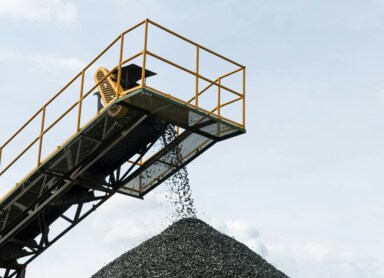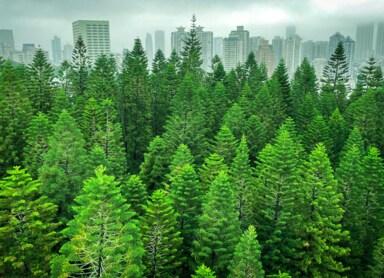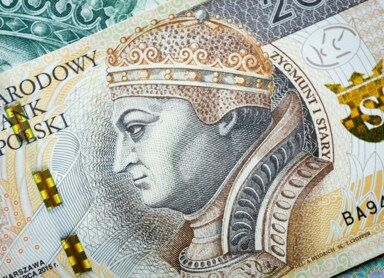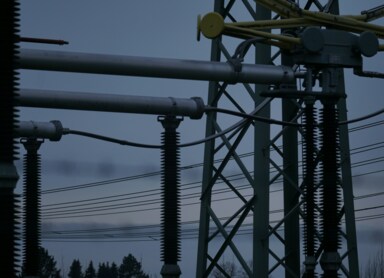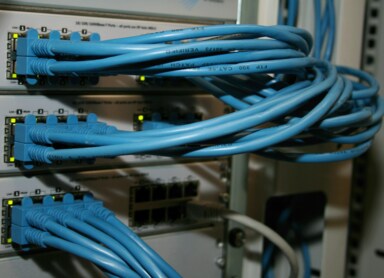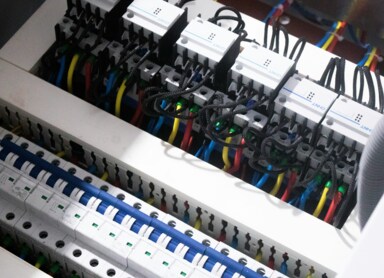Offshore wind farm - how do they work? Poland and world
The energy transition of individual countries - including Poland - involves the search for renewable energy sources. In addition to the well-known photovoltaics using solar energy or wind farms exploiting wind power, offshore wind turbines are playing an increasingly important role in this area. How do these devices work and what does their future look like?
Offshore wind farms – basics of operation and significance
Offshore wind farms are complex installations that utilize solutions from various technical fields. Here, we find elements of energy technology, ocean engineering, machinery operation, and geology. The key components of a wind power plant located on the surface of a body of water include:
- A turbine, set in motion by air currents, which converts kinetic energy into electrical energy;
- The turbine's supporting structure, which ensures stability and resistance to overloads;
- Infrastructure that allows the generated electricity to be stored and transmitted to land, for example, directly to power-buying enterprises.
The core mechanical and electrical system of the wind farm is, of course, the turbine. It consists of a rotor and a nacelle, a capsule-like space where the turbine’s main components are housed. The torque transmission system, comprising bearings, a rotating shaft, and a gearbox, is also crucial. Its task is to transfer the rotor's momentum to the generator, which produces electricity. The generator is complemented by a cooling system that ensures efficient operation of the components and an automated control system.
And what about electronics? Offshore wind farms use an anemometer, a wind vane, and a system that allows the turbine to follow the wind's direction.
The general design assumptions for offshore wind farms require that these structures resist dirt and icing (and the additional weight they bring), be as lightweight as possible, and have highly durable components. They should generate minimal noise and be resistant to lightning strikes. As one can easily imagine, in the event of a storm, tall structures protruding above water are often targets for lightning strikes.
Unlike onshore wind farms, offshore wind farms need to be stabilized differently than traditional, solid connections to the ground by embedding the base. What solutions are used in practice? There are several options.
Monopiles involve anchoring a steel structure to the seabed. These are used in shallow waters (up to 30 meters deep) with sandy bottoms. An alternative is a gravity foundation. Another solution is a tripod, which connects to the seabed at three points, a lattice foundation, or a so-called suction bucket, which is an open-bottom container.
Floating foundations are also used, such as SPAR buoys or semi-submersible structures.
Offshore wind farms in Poland – current projects and plans
The Baltic Sea was the first body of water to host an offshore wind farm (Vindeby in Danish territorial waters). As of 2018, the Baltic Sea ranked third in the world for the number and capacity of offshore wind farms, with 19 farms producing a total of 2,218 MW. In comparison, at the time, farms in the Atlantic Ocean generated 12,938 MW of power. Similar solutions are also being implemented in Poland.
According to Poland's Energy Policy by 2030, seven offshore wind energy projects with a total capacity of 5.9 GW are planned (an additional 13 are in the auction phase). These will ultimately supply clean, green energy to 8 million households. They will also support the shipbuilding, metal, and steel industries. Poland’s offshore wind farms will be located in the Słupsk, Środkowa, and Odrzańska Banks areas, at least 22 km from the coastline, so they won't affect the tourist appeal of seaside towns. They also won't interfere with major fishing grounds. The most advanced projects include:
- Baltica 3 – 1050 MW;
- Baltica 2 – 1500 MW;
- Baltic Power – 1200 MW;
- BC WIND – 500 MW;
- FEW Baltic II – 440 MW;
- MFW Bałtyk II – 720-1200 MW;
- FMW Bałtyk III – 720-1200 MW.
Offshore wind farms around the world – overview of the largest installations
While Polish offshore wind farms generate a lot of electricity, a glance at the largest global investments shows that we still have a long way to go to catch up with the global leaders.
The world's largest offshore wind farm is the Dogger Bank Wind Farm, located in the North Sea and deployed in three phases – Dogger A, B, and C. In total, 277 turbines with a staggering combined capacity of 3.6 GW were installed. Each power plant is equipped with a powerful Haliade X-13 turbine with a capacity of 13 MW. According to the manufacturer, a single rotation of this turbine is enough to power a household for two days!
Second place goes to Taiwan's Greater Changhua project. Implemented in four phases, the offshore wind farm is expected to generate 2.4 GW of electricity, with the final two phases to be completed by 2026.
Third place is held by the Hornsea-2 project. Like the Dogger Bank Wind Farm, it is intended to supply energy to consumers in the UK. It produces enough energy to power 1.4 million households, covering an area of 462 km², with a capacity of 1.32 GW. The farm consists of 165 Siemens Gamesa 8 MW turbines. Each turbine’s rotation can power a household for one day. The rotor blade is 81 meters long and located over 200 meters above sea level.
Offshore wind farms – characteristics, benefits, and challenges
The future of offshore wind farms is undoubtedly a key element of energy security worldwide. What are the advantages of choosing them?
Firstly, the greater stability and speed of winds over water allow for generating larger amounts of electricity than similar onshore installations. They open up new possibilities for supplying coastal areas, which often host critical infrastructure. Finally, they are environmentally friendly and free from restrictions like buildings or hills, allowing for better space utilization.
Experts suggest that the development of offshore wind farms largely depends on the direction of technological trends. Currently, there is interest in synchronous generators, HVDC cables (High Voltage Direct Current), and innovations in platform anchoring methods.
Remember, your company can also indirectly participate in the electricity production from offshore wind farms by signing a PPA (Power Purchase Agreement) for electricity from ecological sources. This not only saves money but also improves your company's image as a partner committed to sustainable development.
